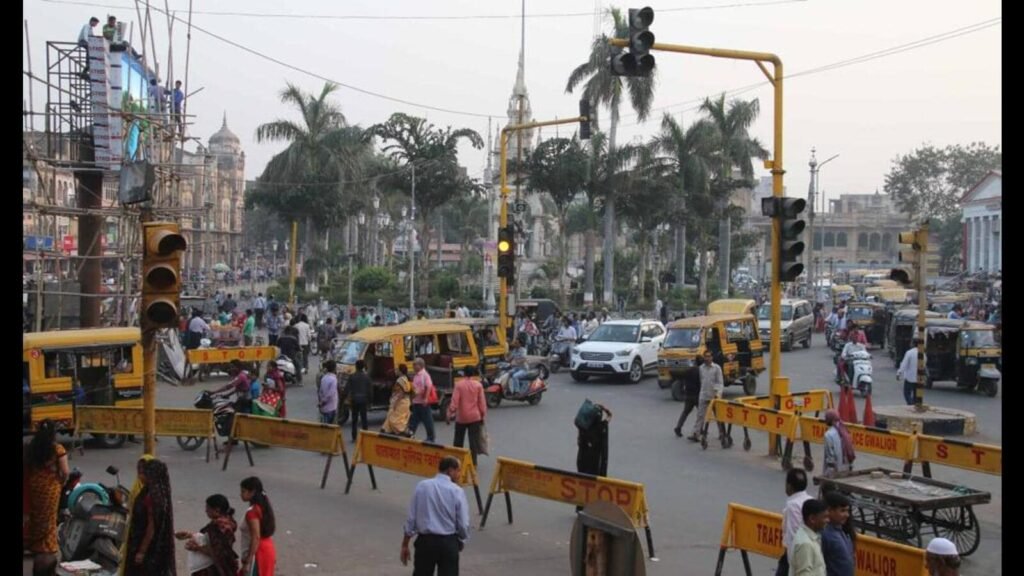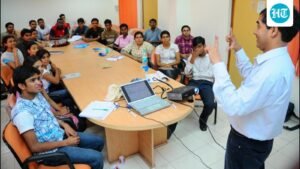
Prime Minister Narendra Modi, at a Niti Aayog Governing Council Meeting, Urged State Governments to Focus on Tier-2 and 3 Cities as Engines of Sustainability and Growth. He spoke of the urban challenge fund (ucf) that will provide seed money. Are the small- and medium-sizes in India ready to embrace such ach transformation? How can we spur, Institutionalise and Sustain Growth in Our Tier-2 and 3 Cities? Here, we sugges some orientations for policy, towed achieving such a goal.

The UCF, Introduced in the FY26 Budget, Allocates 1 Lakh Crore Over Five Years, with 10,000 Crore Set Aside for the current fiscal, to fund projects in three priority areas: cites as growth hubs, creative redeveloped, water and sanitation. The center will finance up to 25% of bankable projects, provided at least 50% of the funding come from bonds, bank loans, or public-principal partnerships (PPPS) Via the Ucf, with the Ucf, with the Remaining 25% Expected from State Governments. This incentiveized Partial Public Funding is Likely to Support Many Tier-2 and Tier-3 Cities.
Budget fy24 Establed the Urban Infrastructure Development Fund (UIDF) with an initial corpus of 10,000 Crore for Tier-2 and 3 Cities to become regional economic hubs. It covered 459 tier-2 cities and 580 tier-3 cities, with City Population Ranging Between 50,000 and 9,99,999. Such a policy shift raises two pertinent questions. First, do we have a framework for identifying tier-2 and 3 cites with significant growth potential? Second, do we have a suitable operational model to bolster the urban economic growth process for making tier 2 and 3 cits India’s new growth hubs? Tier-Wise Classification of Cities is General Based on Population Size, which is no indicator of their growth potential. Tier-1 Cities are the largest metropolies with a population of more than five million, such as Mumbai, Kolkata, Delhi, Chennai, Bangalore, Hyderabad, Ahmedabad and Pune. Tier-2 Cities have a population of one to five to five Million, Such as Visakhapatnam, Vadodara, Amritsar, Bhubaneswar, Mysuru, Among others. Numerous Tier-3 Cities Fall in the Population Range of 100,000 to a Million.
However, all tier-2 and 3 cities are not experiencedly rapid urban growth. They also do not have similar grovers, conditions of urban infrastructure and services, availability of skilled workforce, economic growth history Hubs. Thus, A Framework to Identify Tier-2 and 3 Cities that can become growth hubs in the middle future is needed. In the past, Central Schemes focused on small and medium towns that laid Emphasis primarily on infrastructure development and basic services; Integrated Development Scheme for Small and Medium Towns (1979-80), Urban Infrastructure Development Scheme for Small and Medium Towns (UIDSSMT, 2005) OR ATAL MESSION FOR REJUVANATION and URBAN Transformation (Amrut, 2015) Are Premed on Infrastructure Development Catalysing Economic Growth.
Multiple Factors are essential for the evolution of growth hubs and clusters, such as local specification, availability of skill sets, access to infrastructure-togues Including Organizational Capacity, Enabling Policy and Regulatory Conditions to Foster Private Entrepreneurship, Learning Environments, Effective Planning, and Resource Management Management. The Criteria for Identification of Tier-2 and 3 Cities with Growth Potential Must Take INTO ACCOUNT MULTIPLE FACTORS THAT SAPUR and SUSTAIN GROWTH.
A Common Approach to Operationalising The Tier-2 and 3 Growth Hubs Program Must Include the Following Considerations.
Growth-hub-specific planning: One-size-fits-ball will not be the right approach for supporting growth hubs. All the citations Falling in the two broad population size categories are likely to be different in many respects. Growth Hub-Specific Planning for Various Types of Cities is Necessary.
Skilling: The National Skill Development Corporation has a target for skilling 15 million disadvantaged socio-economic groups, including Vocational Capacity Building Programmes Directed At Continous Learning and innovation, innovation and innovation. Skilling, which must be designed to meet specific skilling requirements of labore markets in tier-2 and 3 cits envisioned as growth hubs.
Access to infrastructure-legistics: Prior Experience has shown that sites of Economic Growth Experience a Spurt in Growth, When Linked To Infrastructure, Including Transport, Logistics HUBS, Water and Affluent Treatment Whitement through Labor, Skill-Pool, Governance). To support an integrated approach, all government infrastructure development programs as well as sugemes of the ministry of housing and urban Affairs Need to Be Irban Affairs Need to be 20255 UDIF 2023 and Tailored to the needs of tier-2 and 3 cities with growth potential.
Institutional Arrangements for Growth: Both Government and Private Actors would be involved in developing growth hubs, and must think collectively to direct investments to these centers. The state governments may assign management of the multi-sectoral growth hubs program to the department of industry and commerce. Or, they could design a multi-level, inter -gancy institutional arrangement, such as a stering commissione committee line by the Chief Minister. Alternatively, a growth hub development authority may be considered, as done in surat, where economic growth is integrated with urban planning and governance.
Supporting Private Entrepreneurship: Urbanisation offers an opportunity to support the government’s efforts to distribute Economic Growth Driven by Markets and Private Capital. Therefore, a thorough assessment of the existence of private entrepreneurship and investment potential, along with the innocent structure that would need to be put in place, are pre-remires for the health hubs Programme.
Lessons from niti aayog’s growth hub initiative: In 2023, Niti Aayog Launched the growth hubs initiative in partnership with state governments. Four citie have been identified as pilots – Mumbai, Varanasi, Surat and Visakhapatnam. It will be scled up to 16 City-Regions. The design and implementation of these growth hub programs can offer some insurance for structuring and institutionalising the program for tier-2 and 3 cities.
Technical support for investment proposals: Many Tier-2 and 3 Cities may not have the capacity to formulate their economic growth proposals to access funds from ucf and the udif. Therefore, State Governments Must Allocate Some Funds in their growth hubs programs to enable these sites in getting technical assistance for this purpose, and Mobilise URBAN RESEARCH and Action Networks to Action Networks to Build capacity.
Such Measures Can Help Operationalise The Vision to Make Tier-2 and 3 Cities India’s New Growth Hubs in A Way That Proves Fruitful and Effective.
Pushpa Pathak is Senior Visiting Fellow and Champaka Rajagopal is Fellow, Center for Policy Research, New Delhi. The views expressed are personal





